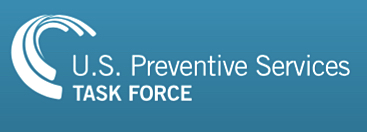 A US Preventive Services Task Force has concluded after careful review that current evidence is insufficient to adequately determine the benefit versus harm of having clinicians conduct routine visual skin cancer screenings.
A US Preventive Services Task Force has concluded after careful review that current evidence is insufficient to adequately determine the benefit versus harm of having clinicians conduct routine visual skin cancer screenings.
The recommendation does not apply to patients who have had skin cancer in the past, those at high risk, or those who observe worrisome skin changes.
Findings by the task force, a voluntary body which operates independently of the U.S. government to make recommendations about the effectiveness of specific preventive care services, were published in the July 26 issue of Journal of the American Medical Association (JAMA).
The purpose of the task force’s recent work was to update the 2009 US Preventive Services Task Force (USPSTF) recommendation on skin cancer screening.
In the report titled “Screening for Skin Cancer: US Preventive Services Task Force Recommendation,” the task force noted that basal and squamous cell carcinomas, two of the three most common skin cancers, account for fewer than 0.1% of skin cancer deaths. On the contrary, much higher mortality rates are associated with the less prevalent but more serious melanoma forms of skin cancers. An estimated 76,400 men and women in the U.S. are projected to develop melanoma in 2016. Considering statistics, about 10,100 of them could die.
To update the previous recommendation, the task force reviewed available evidence on the effectiveness of clinical visual skin examinations for reducing skin cancer morbidity and mortality. It reviewed potential harms resulting from associated diagnostic follow-up; its test characteristics when performed by a primary care clinician versus a dermatologist; and whether its use leads to earlier detection of skin cancer.
However, they noted that evidence that could aid in assessing the overall benefit of routine skin cancer screening with clinical visual skin examinations was limited, and that evidence gleaned from intensive studies such as the Skin Cancer Research to Provide Evidence for Effectiveness of Screening in Germany that involved major methodological means, also proved insufficient over time.
Conversely, the task force observed that potential for harm exists such as unnecessary biopsies that could result in cosmetic damage to patients. Other harms include functional side effects, over diagnosis, and over treatment for lesions that do not become cancer and skin cancers that would not have harmed the patient or resulted in death. For example, they noted that the majority of suspicious skin lesions excised during screening are not cancerous. In fact, the SCREEN study found that for every 20 to 55 excisions performed, only one result in skin cancer diagnosis.
The task force emphasized that patients with a suspicious skin lesion or who are already under surveillance because of a high risk of skin cancer fall outside of the scope of their recommendation statement. High risk characteristics include fair complexion, use of indoor ultraviolet tanning beds, histories of sunburns or previous skin cancer, having one or more dysplastic nevus (atypical mole), or having and a family history of melanoma.
The report also notes that most professional medical organizations in the U.S. currently have no specific recommendations regarding clinical visual skin examination screening for skin cancer, although the American Cancer Society recommends that adults aged 20 years and older who receive periodic health examinations should request skin examinations as part of general cancer-related checkups. In fact, a 2005 survey of U.S. physicians found that 81% of dermatologists, 60% of primary care physicians, and 56% of internists reported performing a full-body visual skin cancer screening examination on adult patients.
Absent in the current statement is mention of self-examination but a future statement will likely include a recommendation for patient counseling for skin cancer prevention.
The U.S. Preventive Services Task Force is made up of 16 volunteer members who are nationally recognized experts in prevention, evidence-based medicine, and primary care. Their fields of practice and expertise include behavioral health, family medicine, geriatrics, internal medicine, pediatrics, obstetrics, gynocology, and nursing.


